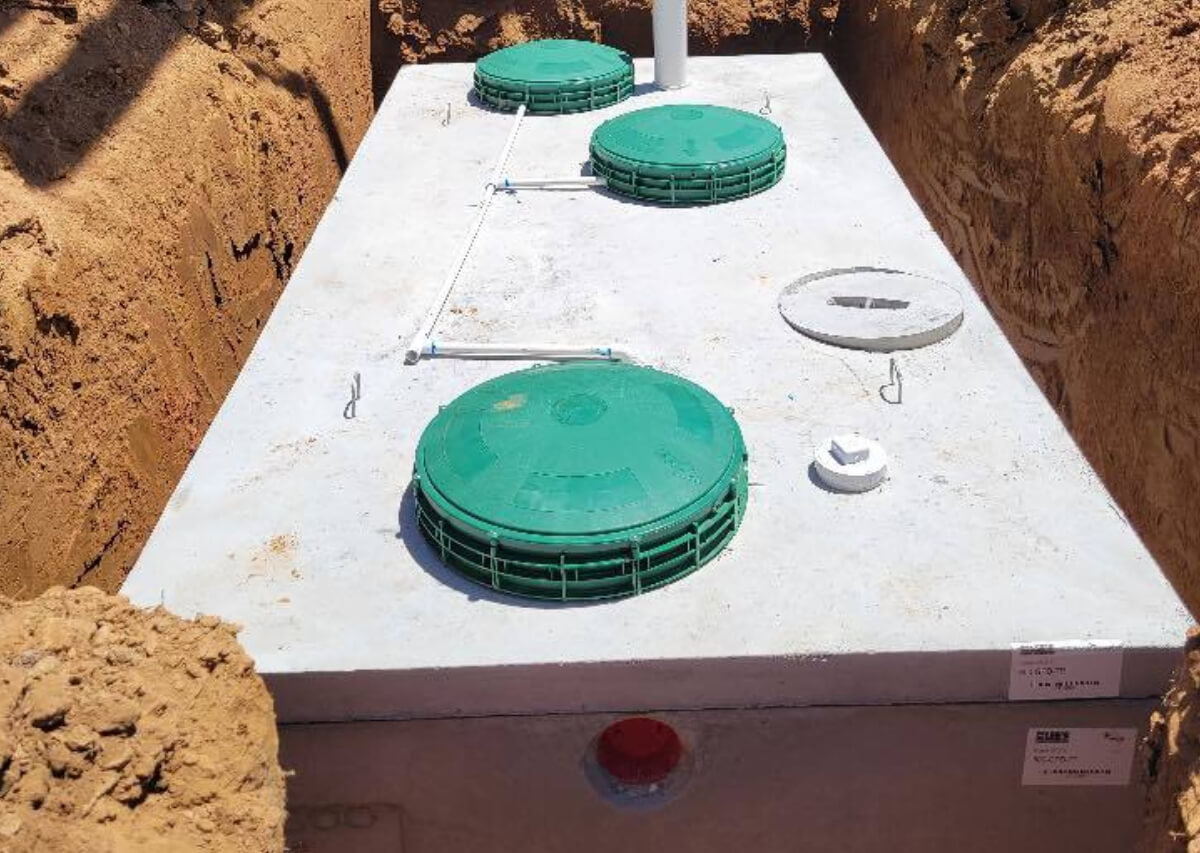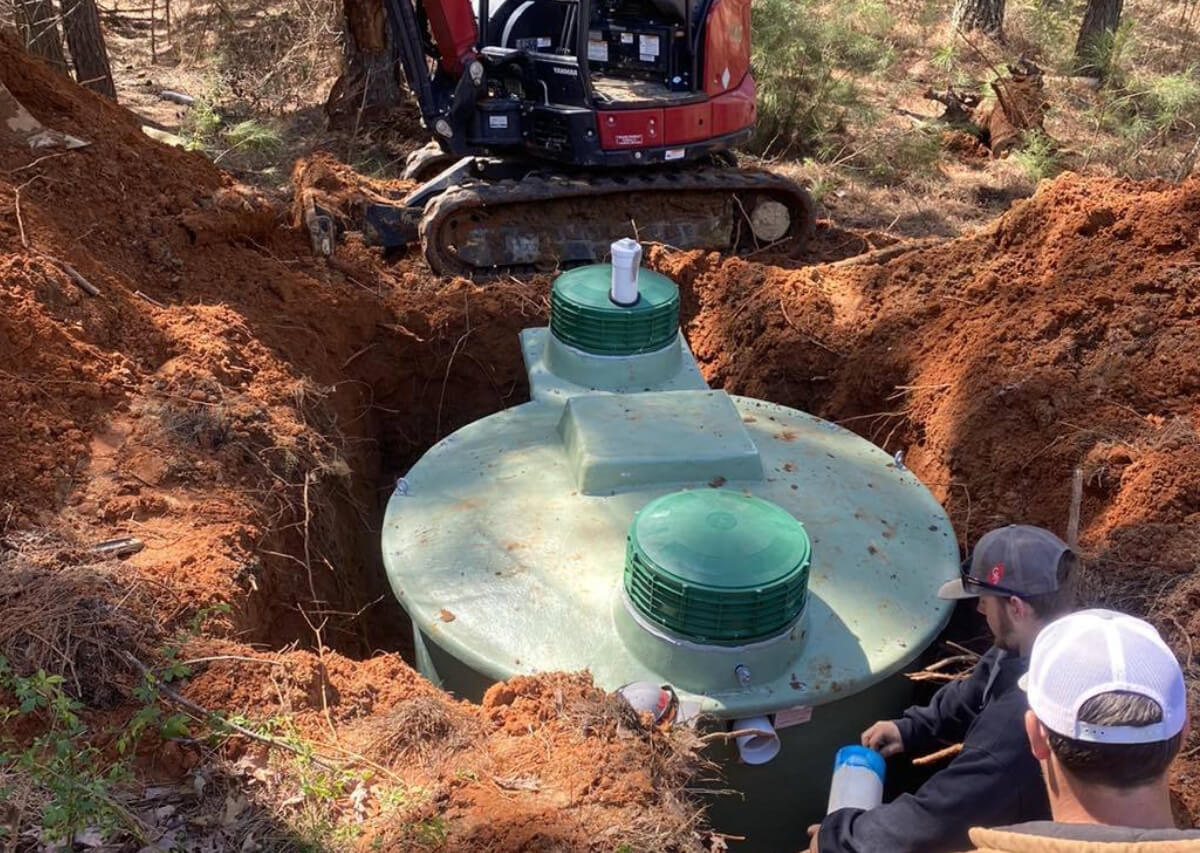Frequently Asked Questions
Mid-South Septic Tank Services
Got a Question About Our services?

How often should I get my tank serviced?
The frequency at which you should get your septic tank cleaned can vary depending on several factors, including the size of the tank, the number of people using the system, the volume of wastewater generated, and the types of solids and materials being flushed into the system. In general, septic tanks usually require pumping and cleaning every 3 to 5 years.
What keeps a septic tank healthy?
Minimize use of harsh cleaners, bleach, antibacterial soaps and detergents. Do not dispose of paints, medications or chemicals through your septic system. Keep grease, lint, food, feminine hygiene products and plastics out.
How much does a septic system cost in MS?
Is a permit required for septic tank installation?
By law, you must apply to us and install a septic system from the Permit we issue. A Licensed Installer must install it and the proper paperwork must be submitted to the Division. Just because we do not inspect the installation does not mean anything can be installed.
Why are septic tank inspections important?
Septic tank inspections are vital as they ensure proper functioning of the system and help prevent potential health hazards and environmental contamination caused by leaks or failures. Regular inspections identify issues early, allowing for timely maintenance and avoiding costly repairs or replacements.
What is the most important part of a septic tank?
The soil is the most important part of the septic system and must be evaluated and protected properly. If the soil layer is too thin, the wastewater will not be treated before it enters the groundwater. If the soil is too compacted, it will not absorb all the wastewater, forcing it to the surface.
How long does a septic system take and how is it installed?
Installing a septic system is a complex process that involves several steps and requires expertise in various fields, including engineering, excavation, plumbing, and regulations. The timeline for installing a septic system can vary widely based on factors such as the system type, soil conditions, local regulations, weather, and the availability of skilled labor.
What is sewage treatment and why is it important?
Sewage treatment is the process of removing contaminants and pollutants from wastewater, which includes domestic sewage, industrial effluents, and runoff from urban and agricultural areas. The primary goal of sewage treatment is to clean the water to a level where it can be safely released back into the environment or reused for certain non-potable purposes.
How do I know is my septic system is leaking?
First, check for any foul odors in and around your property, especially near the septic tank or drain field. Excessively lush and green grass, even during dry periods, can also indicate a leak as leaking sewage acts as a fertilizer. Slow drains, gurgling sounds in plumbing fixtures, or sewage backup in sinks or toilets could signal a problem. Unusual wet spots or pooling water above the drain field, as well as visible settling or depression in the ground, might indicate leakage. Additionally, a sudden increase in your water bill without an apparent reason could imply water is entering the system through a leak. If you observe any of these signs, it’s essential to contact a professional septic system service to assess and address the issue promptly. Ignoring a potential leak can lead to environmental contamination and costly repairs.
How often do we need to service our grease traps?
The frequency of servicing grease traps depends on several factors, including the size of the trap, the volume of grease and food waste generated, and local regulations. In general, commercial kitchens and food establishments should have their grease traps serviced regularly to prevent clogs and ensure efficient functioning. For smaller establishments, a quarterly service schedule might suffice, while larger and busier kitchens might require more frequent monthly or even bi-monthly servicing. Regular maintenance helps prevent blockages in plumbing systems and minimizes the risk of foul odors, sewage backups, and environmental contamination.
Are Mid-South septic systems eco-friendly?
Septic systems can be considered relatively eco-friendly when properly designed, installed, and maintained. They treat wastewater on-site, using natural processes to break down and filter out contaminants. However, their environmental impact depends on factors such as soil conditions, maintenance practices, and proximity to water sources. Poorly maintained or improperly designed septic systems can lead to groundwater contamination and other ecological issues. Proper management and regular maintenance are crucial for ensuring their eco-friendliness.
When would a septic system require an inspection?
Here are some common instances when a septic system might require an inspection: Real estate transactions, regular maintenance, before and after pumping, system aging or upgrades, suspected issues, new installations, environmental concerns, and regulatory compliance. It’s crucial to check with your local health department or relevant regulatory authority to understand the specific inspection requirements in your area.
Need an Estimate?
Septic Tank Install, Repair, Cleaning, and Inspections
Residential & Commercial
Septic tank treatments for residential and commercial purposes involve the use of specialized products to enhance the efficiency and longevity of septic systems. These treatments often consist of bacterial additives that help break down organic waste and solids within the tank, facilitating decomposition and preventing clogs. Regular application of these treatments can maintain proper functioning, prevent odors, and reduce the need for frequent pumping of the septic tank.
Septic tank installation involves the placement of an underground wastewater treatment system on a property without access to a municipal sewer line. The process includes excavating a suitable location, installing the septic tank, connecting it to the household plumbing, and creating an effluent distribution system, typically a drain field, to disperse treated wastewater into the soil. Proper installation is crucial for efficient and environmentally responsible waste disposal in areas not served by centralized sewage infrastructure.
Septic tank inspections involve a thorough assessment of on-site wastewater systems to ensure their proper functioning and compliance with regulations. Trained professionals examine the tank’s structural integrity, level of accumulated solids, and effluent distribution. This process helps identify potential issues, such as leaks or blockages, and allows for timely maintenance to prevent environmental contamination and system failures.
Septic tank repairs involve fixing issues within a septic system designed to treat and dispose of household wastewater. These repairs might address problems such as leaks, cracks, or structural damage in the tank, inlet/outlet pipes, or drainage field. Proper repairs are crucial to prevent environmental contamination and ensure the system’s efficient functioning.
Septic tank draining and pumping is a vital maintenance process for sewage systems. It involves removing accumulated sludge, scum, and wastewater from the septic tank using specialized vacuum equipment. Additionally, pumping and draining to clean the tank’s interior walls and inlet/outlet pipes, ensuring proper functionality and preventing blockages.

